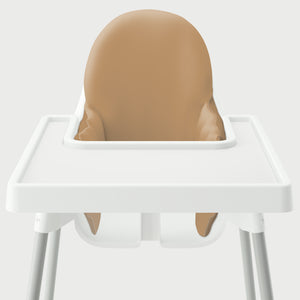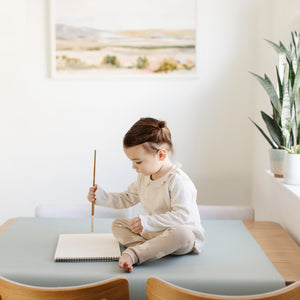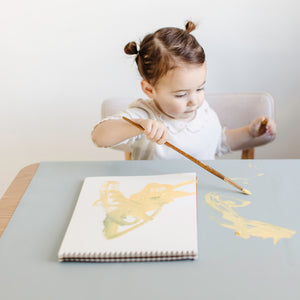How to Prepare Your 3-5 Month Old For Solids

The AAP recommends waiting until 6 months of age to introduce solid foods, but parents often want to know if there is anything they can do to prepare for food introduction. Here are THREE easy activities you can do with your infant leading up to this milestone:
Floor Time
Try to limit container use and get your baby ON THE FLOOR. We want our babies to have good sitting skills before they start solid foods, and it takes a lot of muscle building to work up to sitting.
Include Baby in Family Meal Time
Exposure to family meal time can be a great activity for your baby BEFORE they are ready to start eating complimentary solids. It is beneficial for your baby to watch you eat, see the food, and smell the food. If your baby can tolerate it, you can even put them in their high chair with you during meals. After all, mealtime is about more than just food. It is also about family time and socialization.
Mouth Toys
Around 4 months, you will notice that your baby is starting to bring everything in their mouth. While many people assume this means teething, it is actually a developmental milestone called mouthing that assists in preparing baby for eating solid foods.
Very generally speaking, mouthing can help your infant explore different textures in their oral cavity, integrate the gag reflex back further in their mouth, and give the tongue and other structures the opportunity to move around in a variety of directions and shapes. In a way, it sort of gives the brain and mouth an opportunity to map out what is to come. Check out this post all about mouthing to learn more.
It's important at this age to give plenty of opportunities for mouthing and provide your baby with appropriate mouthing toys. When I worked with Yeah Baby Goods to design their All You-Tensil, this was one of our primary objectives. My dream was to create a beginner utensil that could also be used as a beneficial mouthing toy prior to starting solids. The soft silicone is gentle on gums, the long stick shape helps with oral mapping, raised sensory bumps give texture variation, and the wide handle develops fine motor control.
RELATED POSTS







